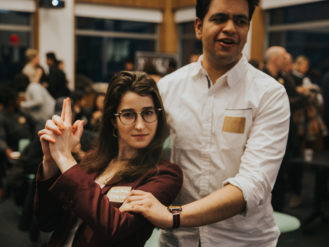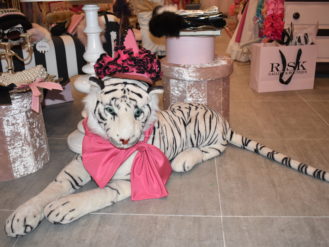Where in the World Did This Wood Come from?
At Brooklyn's Madera, masters of hardwood flooring, they can tell you exactly the source and how it was produced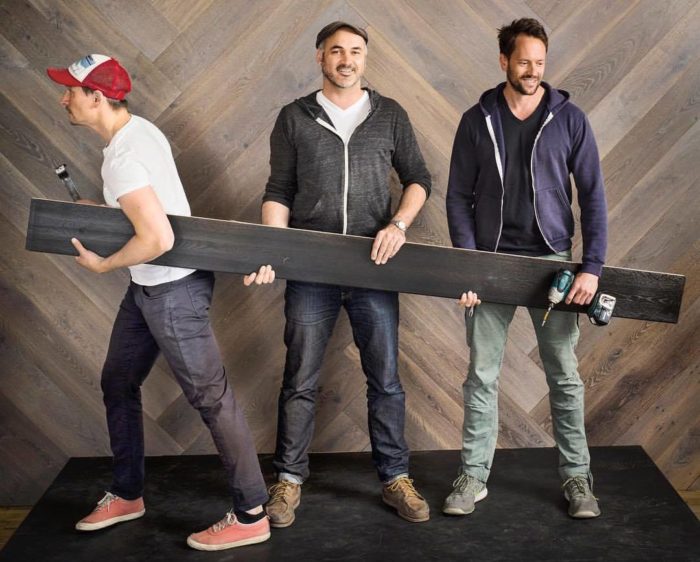
Madera founders (from left) Daniel Clason Höök, James Robb, and Daniel's brother Mikael (Photo by Jeff Harris, courtesy of Madera)
Brooklyn may be known for its brownstone on the outside, but on the inside, the Brooklyn look is a lot about wood. And not just any factory-produced stuff. Often it’s reclaimed wood, with an interesting story about where it came from. Or it’s from the building-supply version of the farm-to-table movement: “forest to floor.”
If there’s such a thing as artisanal wood, the Brooklyn company Madera has nailed it, with sustainable sources, thoughtful design, finishes that won’t harm your health, and even sawmills situated close to the city to minimize the fuel consumed in shipping. Launched in 2012, the company’s hardwood floors and wall coverings have been installed everywhere from TriBeCa lofts to the Brooklyn Bowl’s outpost in Las Vegas.
But the heart of Madera’s customer base is in its home borough. “The Brooklyn homeowner, we work for them,” says Madera co-founder James Robb, who lives near the Botanic Garden. “This is our most valuable customer: the young family who just bought an apartment or a brownstone … and they get to walk down [to the showroom] and buy a new floor for their renovation without breaking their budget.”
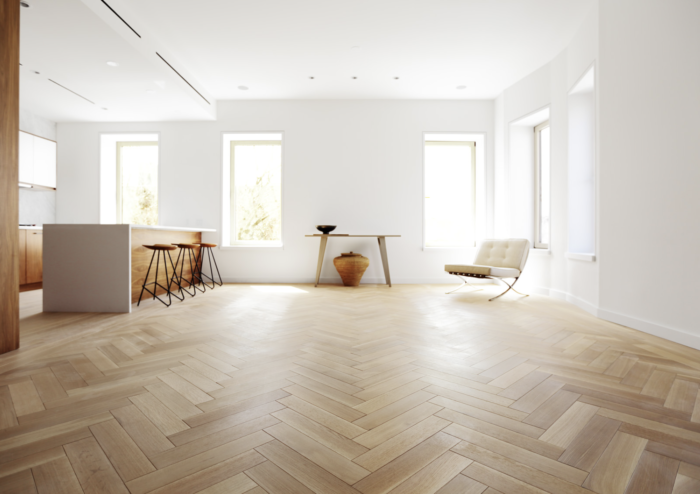
For this residential building in Park Slope, the company installed white oak in a herringbone pattern with a Nethermead finish from the Brooklyn Collection (Photo by George Del Barrio, courtesy of Madera)
Madera’s collections of varied timber species, cuts, and colors can be seen at the company’s office and showroom at 22 Waverly Ave. (across from the Brooklyn Navy Yard), where the floors interact with five furniture arrangements. The founders, including Swedish-American brothers Daniel and Mikael Clason Höök, have named one collection “Brooklyn,” with styles including “Grand Army” and “Fulton Ferry.”
Before starting Madera, the Clason Höök brothers roamed the world, including hotspots like Afghanistan and South Sudan, with Daniel pursuing carpentry and homebuilding while Mikael worked in agriculture and rural development. A turning point came when when Robb and the brothers visited Ecuador, taking in “a cathedral-like forest of giant bamboo” while “talking to members of a farmers’ cooperative that produces bamboo-building materials,” as they tell the story on their website. The pair realized they’d found something that could be used to “produce sustainable flooring and architectural finishes.” While plenty of other companies claimed to provide similar services, the Madera founders felt their vision would prove even more sustainable as well as affordable.
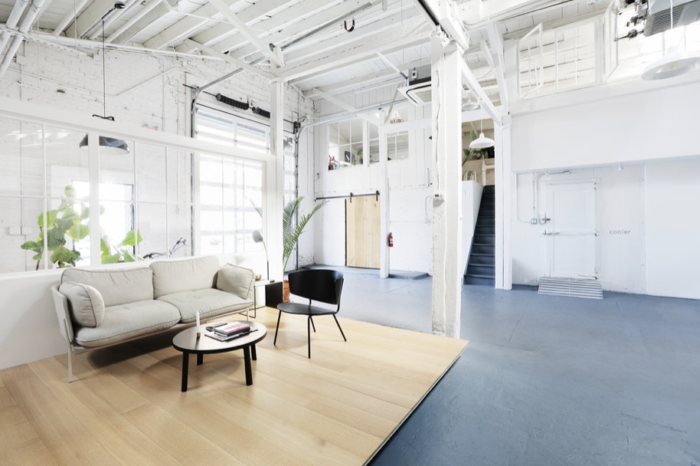
In the company’s Clinton Hill showroom, samples are paired with furniture arrangements (Photo by George Del Barrio, courtesy of Madera)
Madera has since pivoted away from bamboo, dealing primarily in white oak, black walnut, and ash because of their durability and steady supply from sustainably managed plantations in New York, Pennsylvania, and Georgia. The company’s rise has also been in tune with industry trends, including the outbreak of the Brooklyn rustic-chic look, often captured by a combination of reclaimed wood and deep stains.
Procuring reclaimed wood can be an adventure. Robb combs the U.S. for it, scouting structures slated for demolition, obtaining the rights to the wood, and finding nearby sawmills to provide the custom cuts and designs.
For one Brooklyn residence, profiled in Brownstoner, Madera sourced reclaimed wood from wine tanks used in a Finger Lakes winery (“yes, the wood did smell like wine,” the publication reported). Madera has taken wood from tobacco barns and warehouses in the Carolinas, a Kentucky bourbon distillery, the old Domino Sugar refinery in Williamsburg, and shipping paletts that traveled the world.
“There is still a great deal of material out there, in these great industrial cities in the Midwest,” Robb says. “Longleaf heart pine was originally from the Southeast of the United States; it was one of the largest forests in the world. It was decimated through the building of the Industrial North and poor forest management,” he explains. So, today, in cities and towns along the Mississippi and Ohio rivers, there’s a rich supply of 19th-century heart pine wood that was used in putting up buildings that have since fallen into disrepair, waiting for Robb to purchase them. Railroads brought the wood to the Northeast as well, where New York City offers a wealth of reclaimable material in old industrial buildings.
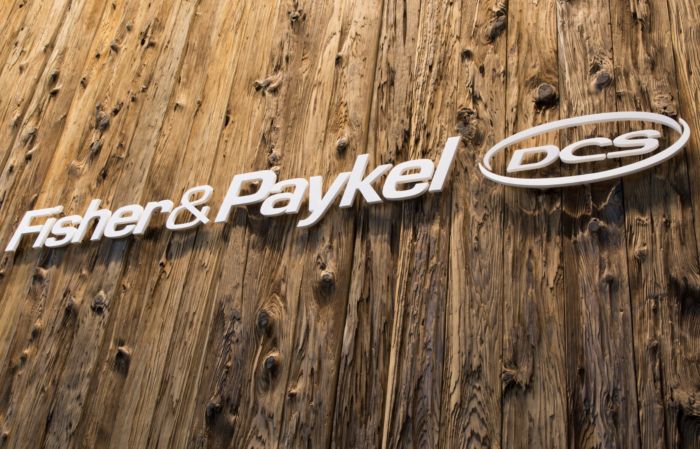
For an appliance showroom in Los Angeles, the company produced a highly textured look (Photo courtesy of Madera)
In processing the reclaimed wood for current purposes, Madera often looks to Amish communities. “They do a lot of the grunt work” on reclaimed wood, such as the removal of nails, sanding, and attending to discoloration, Robb says. “They’re very talented, they’re very reliable, and their prices can’t be beat. This is an important source of revenue for them, especially during the non-farming seasons.”
Reclaimed wood is usually pricier than that of fresher timber sources, primarily because it’s more labor intensive to reclaim. However, the wood is generally denser, and thus stronger, because newer wood comes from younger forests.
Still, since there’s a finite amount of old wood to be reclaimed, Robb is always on the lookout for fresh wood sources. “There’s all these other species which are just not in the public consciousness right now,” Robb observes. “I think it’s going to be the soft woods” that come back, he says. “I think we’re going to see hickory being used and even red oak,” which is found in abundance throughout the U.S. Robb says the burgundy-hued look of red oak, first popularized in the 1970s, fell out of favor over time. But “with the kind of finishing processes we can do [today],” Robb says, “we can extract that red color, so what you get is red oak, but with a very modern interpretation.”
“So many people love ‘white’ right now, these marble-esque finishes,” Robb continues. Madera accomplishes the look through a desaturation process of ash, maple, and walnut woods. The brighter wood means more natural light bounces around an interior, which cuts down on energy costs, he notes.
One of Madera’s biggest current jobs is supplying floors for the Park Avenue Armory as part of the Manhattan cultural center’s $200 million renovation project. Madera will recreate the 120-year-old original floors by sourcing and milling Vertical Grain Heart Pine from former industrial factories in the Midwest. Another sign of the company’s rising reputation is that Madera-made floors in a new Prospect Heights condominium, the residences of 280 St. Marks, are used as a selling point: “Sustainably harvested in western Pennsylvania and manufactured and finished in western New York, the 7”-wide plank, live-sawn white oak floor from Brooklyn-based Madera Trade infuses your home with a warm and natural ambiance.”
Madera’s “Bone White” collection will be showcased at the company’s showroom on Tues., May 22, as part of NYCxDESIGN–the annual celebration of design in the five boroughs. The company also offers discounts to borough residents.





